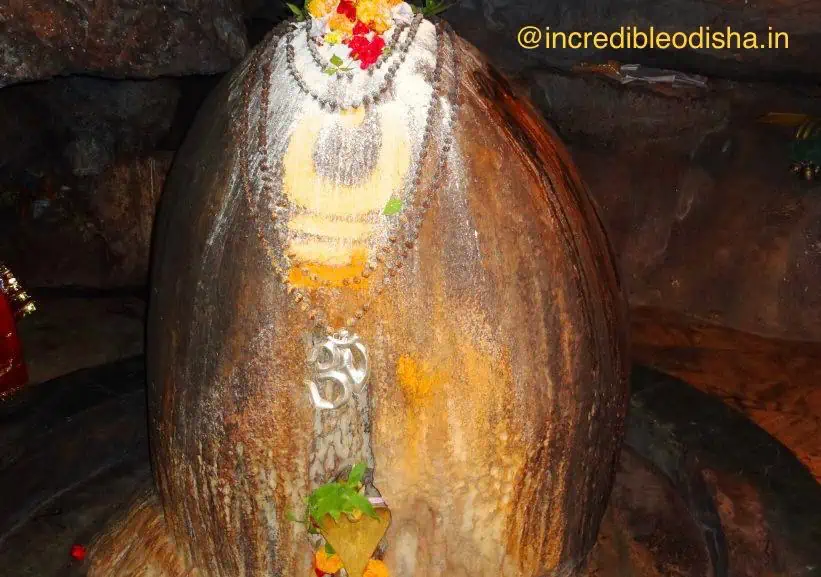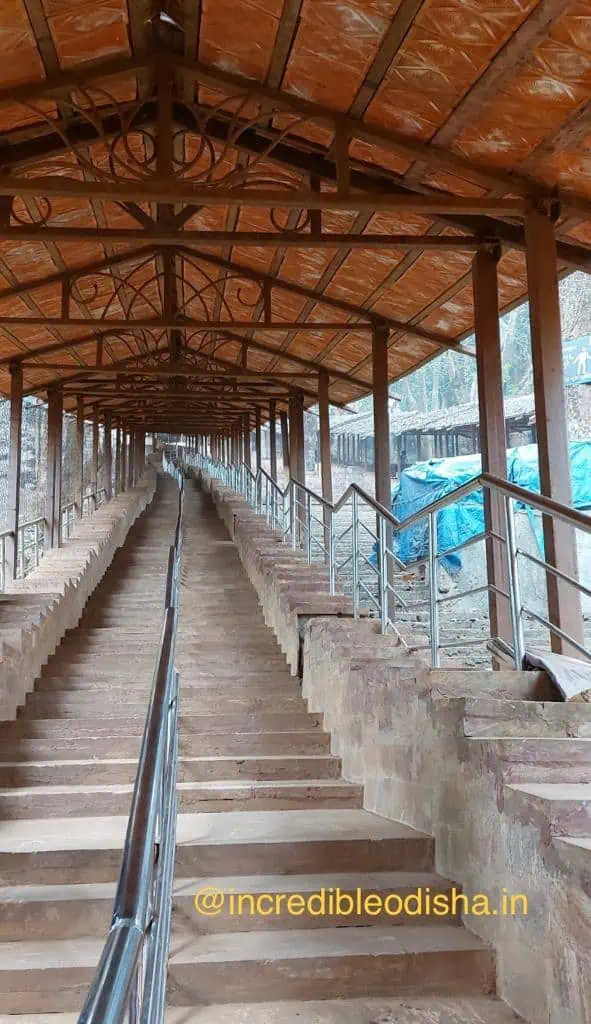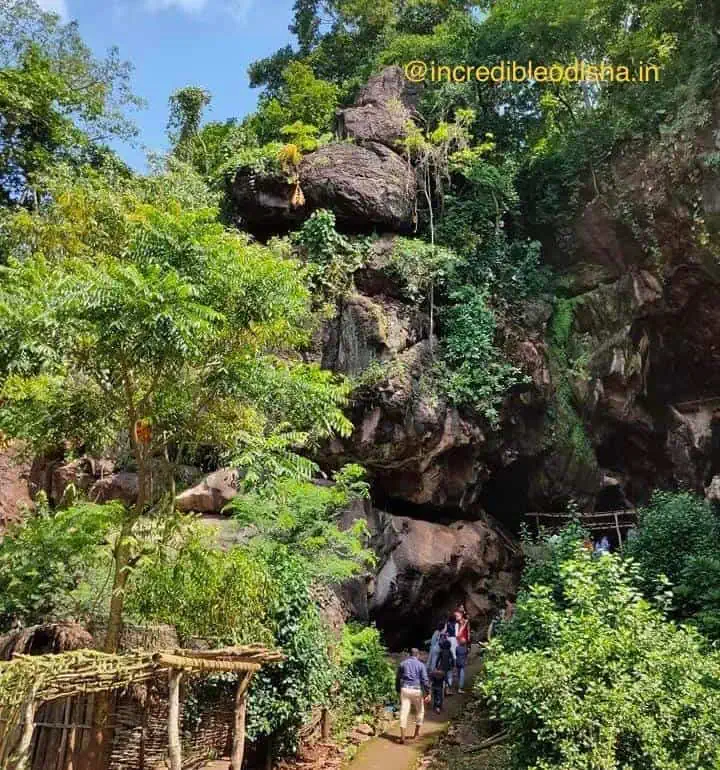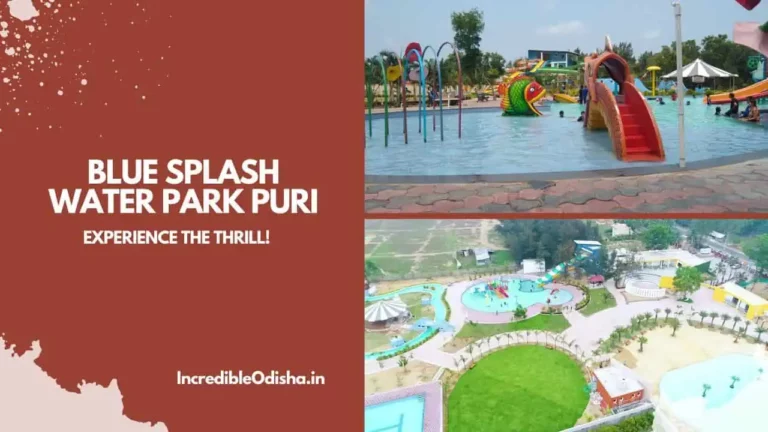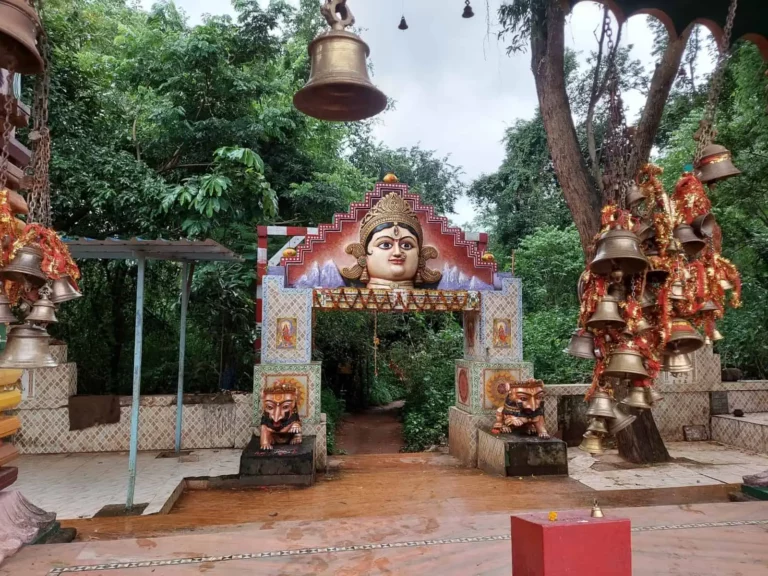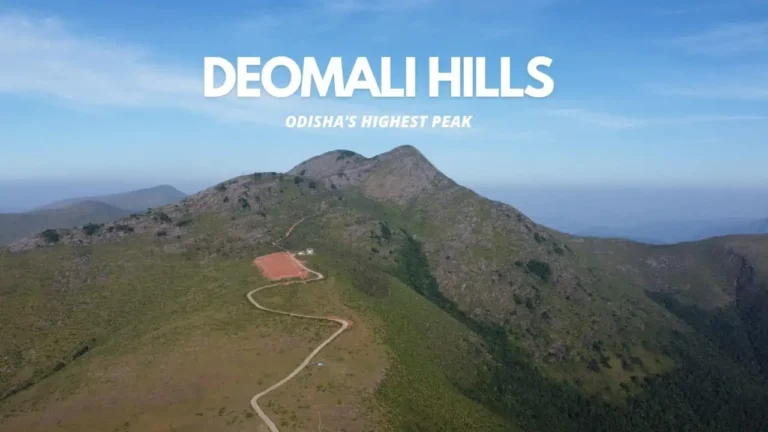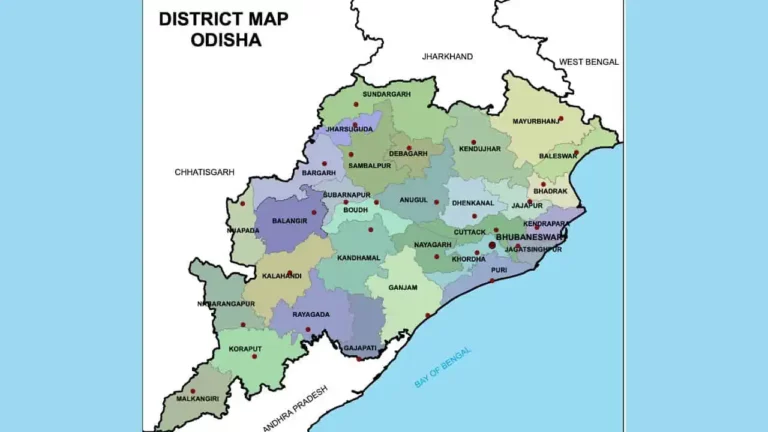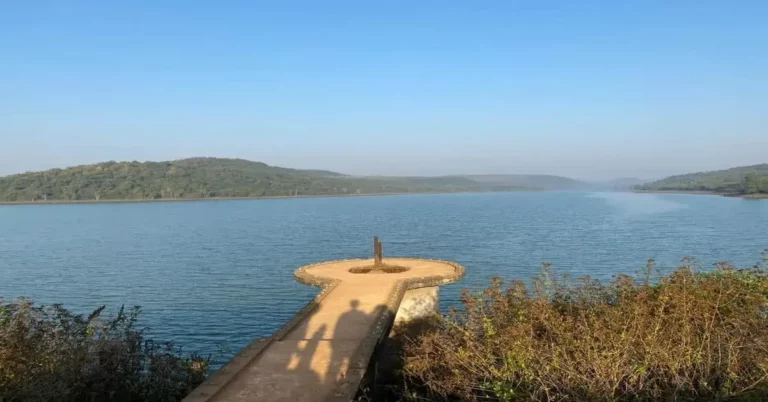Gupteswar Temple and Caves Koraput History, Timings, Distance, and Photos
Deep in the thick forests of Koraput district in Odisha lies a hidden gem: the Gupteswar temple and caves. The Gupteswar temple and caves are just 58 kilometers from Jeypore and 80 kilometers from Koraput. This ancient temple and cave system is a testament to the rich history and culture of the region and is revered by both locals and visitors alike.
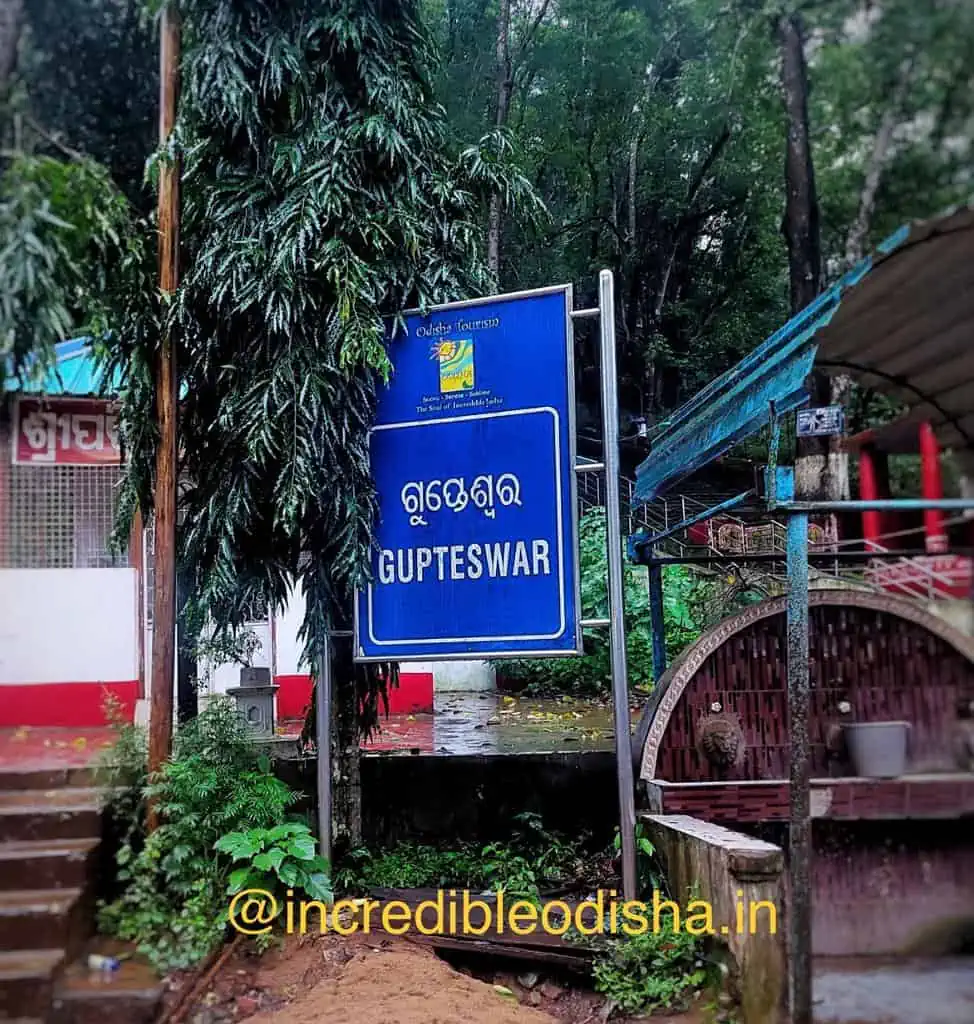
In this article, we will look at the history, distance, timing, and photos of the Gupteswar temple and caves.
Consider reading: Best Places to Visit in Koraput
Gupteswar Temple Timing
Gupteswar Temple opens very early in the morning. Some of the devotees visit the temple at 3 AM in the morning but most of the time the temple closes after sunset around 7 pm.
Gupteswar Temple History
According to historical accounts, Lord Rama, along with Sita Mata and Lakshmana, spent part of his exile in the beautiful Dandakaranya forest, some of which is now identified as the dense forest area of Koraput district in Odisha.
As the legend goes, it was Lord Rama who discovered a rare and extraordinary Swayambhu (self-manifested) Shiva Linga in a cave deep within the woods.
Recognizing the sanctity of the Shiva Linga, Lord Rama began worshipping it and named it Lord Gupteshwar, which means “hidden lord,” as its existence was unknown to the world. This is also mentioned in the Ramayana.
Locals say that the cave and the Shiva Linga remained forgotten for many centuries until King Vikram of Jeypore accidentally stumbled upon the cave while hunting a deer.
King Vikram encountered a hunter at the cave’s entrance, who denied seeing any deer enter the cave. The king rested in the cave, where he dreamt of Lord Shiva revealing His presence within.
Upon awakening, King Vikram searched for the hunter but found no one. He then ventured inside the cave and discovered the Shiva Linga, which had seemingly appeared out of nowhere.
Overcome with joy and gratitude, the king began worshipping Lord Gupteshwar, and it is said that he used to travel on foot to the temple during the holy month of Shravan.
Despite being abandoned for a time due to its inaccessibility, the cave was eventually rediscovered by a hunter or tribal in the late 19th century. Since then, locals have diligently worshipped Lord Gupteshwar, and the nearby hill is named Ramagiri after Lord Rama.
The cave is enclosed by a dense forest of sal trees, and the sound of the nearby river Sabari, also known as Kolab in Odisha, adds to the serene atmosphere.
Looking for places to visit in Koraput? Consider reading: Deomali Hill – The Highest peak of Odisha
Gupteswar Cave
The Gupteshwar cave is a natural limestone cave, similar to Borra Caves, and is accessed by steps carved out of the hill. The entrance to the cave is about 9.5 feet wide and 6.5 feet high, and the cave’s stunning stalactites and stalagmites are the result of perennial water flow over limestone deposits..
The Shiva Linga, which is 3 feet high and 10 feet in circumference, is located inside the cave. Interestingly, the Shiva Linga grows in size every year.
There is also a large stalactite inside the second cave that is revered as the udder of Kamadhenu, and visitors wait for drops of water to fall from it, which they accept with devotion as the milk of the Divine Cow.
However, scientists claim that the water is mixed with limestone, making it white in colour and resembling milk.
Despite this, devotees visit the temple in large numbers during the month of Shravana, Maha Shivaratri, and Purnima. They take a dip in Maha Kund and spend time in bhajans, chanting, and meditation.
Many people suffering from incurable diseases come from distant places to seek the blessings of Lord Gupteshwar, and locals believe that the merciful Lord hears their prayers and fulfils their wishes.
Consider reading: Balda Cave – A Hidden Treasure of Koraput
Gupteswar Temple and Caves Images
Here are some images of the Gupteswar Temple and Caves:
Gupteswar Temple and Caves Distance
| Location | Distance |
|---|---|
| Jeypore | 58 KM |
| Koraput | 80 KM |
| Similiguda | 100 KM |
| Damanjodi | 107 KM |
| Patraput Bridge | 45 KM |
| Bhubaneswar | 583 KM |
| Berhampur | 393 KM |
| Visakhapatnam / Vizag | 243 KM |
| Jagdalpur | 96 KM |
Gupteswar Temple Bol Bam Yatra
Bol Bam Yatra is an annual pilgrimage undertaken by Lord Shiva’s devotees, who walk for miles carrying water from the river to offer at the holy shrine of Lord Gupteswar in the Koraput district of Odisha. This yatra is a unique celebration of faith and devotion and attracts thousands of devotees every year.
During the month of Shravana, which falls between July and August, thousands of people from different parts of India come to this temple to offer their prayers and seek blessings from Lord Shiva.
The devotees carry water from the nearby Saberi River in clay pots, which they balance on a bamboo pole that they carry on their shoulders. This practice is known as ‘Kaudias’ and the devotees are called ‘Bol Bam’.
The journey starts from Patraput bridge where the Kaudias carry water from the Saberi river and carry it for almost 45 kilometres to reach the Gupteswar Shrine. The Bol Bam Yatra in Gupteswar is known for bringing people together and offering prayers to lord shiva.
The journey is considered a tough one as the devotees walk around 40-60 km on foot, from their homes to the temple, singing hymns and devotional songs in praise of Lord Shiva. The entire journey is undertaken barefoot, as a mark of respect to the Lord. Some devotees also fast during the entire journey, while others eat only vegetarian food.
The Bol Bom Yatra is a unique and vibrant celebration of faith, devotion, and sacrifice. It is not just a religious event, but also a cultural one, with the devotees sharing stories, songs, and food with each other. It’s an opportunity for people from different backgrounds to come together and celebrate their faith in Lord Shiva.
Once the Bol Bom devotees reach the Gupteswar Temple, they offer their pots of water to Lord Shiva and take a dip in the nearby kunds or pools, which are considered holy. The water is believed to have healing properties and the devotees take back the holy water with them as a souvenir of their pilgrimage.
The Gupteswar Temple is a hidden gem in the heart of the forest, with its natural limestone cave and stunning speleothems. The Shiva Linga inside the cave is a rare and extraordinary one, growing in size every year. It’s no wonder that the Bol Bom Yatra attracts thousands of devotees every year, all seeking the blessings of Lord Shiva.
The Koraput District administration facilitates the Bol Bam yatra every year. During this occasion, locals get together and offer help to the Kaudias along the route to Gupteswar. If you are around Koraput District during the Bol Bam Yatra then do not miss experiencing this unique festival.
Consider reading: Putsil Valley and Punjisil Waterfall
FAQs on Gupteswar Temple and Cave
Where is Gupteswar temple located?
Gupteswar temple is located in the Koraput district of the Indian state of Odisha. It is situated in the Eastern Ghats, around 60 kilometers from the city of Jeypore.
What is the significance of Gupteswar temple?
Gupteswar temple is an important pilgrimage site for Hindus, and is dedicated to Lord Shiva. It is believed to be one of the oldest Shiva temples in the region, and is known for its beautiful natural setting and intricate carvings.
What is the history of Gupteswar temple?
The exact history of Gupteswar temple is not known, but it is believed to have been built during the 14th century by the Ganga dynasty. The temple has undergone several renovations and additions over the years, and today it is a popular destination for tourists and pilgrims.
What is the best time to visit Gupteswar temple?
The best time to visit Gupteswar temple is from October to March, when the weather is pleasant and cool. During the summer months, temperatures can be quite high, making it difficult to explore the area.
What are the nearby tourist attractions to Gupteswar temple?
Some of the nearby tourist attractions to Gupteswar temple include the Duduma Waterfall, the Deomali Mountain, and the Jagannath Sagar Dam. The area is also known for its natural beauty and wildlife, and is a popular destination for trekking and bird watching.
Are there any rules or regulations for visiting Gupteswar temple?
Visitors to Gupteswar temple are expected to dress modestly and remove their shoes before entering the temple. Photography is allowed, but visitors should be respectful and avoid taking pictures of other people without their permission. Additionally, visitors should avoid littering or causing damage to the natural surroundings.
